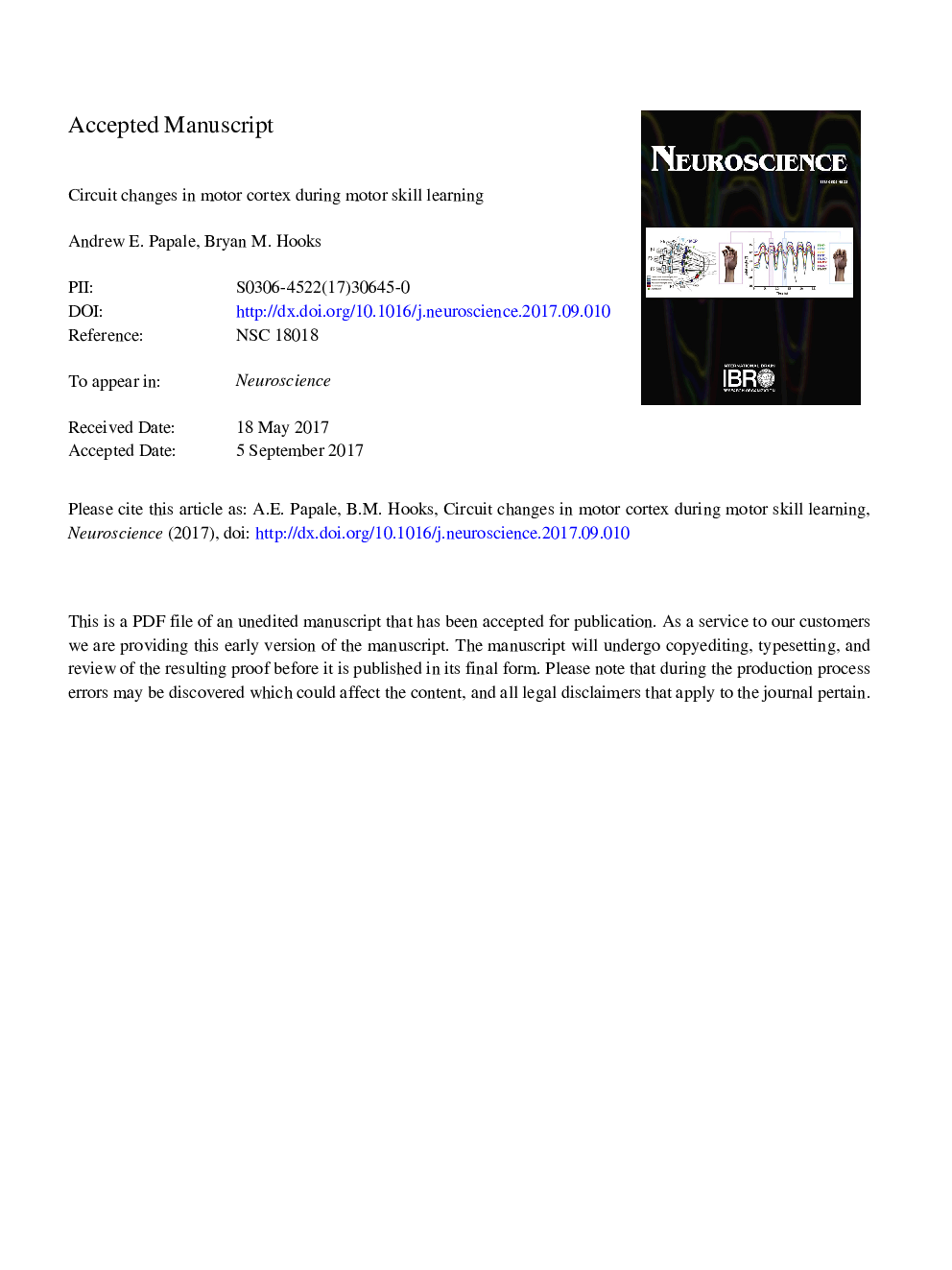| Article ID | Journal | Published Year | Pages | File Type |
|---|---|---|---|---|
| 8841231 | Neuroscience | 2018 | 42 Pages |
Abstract
Motor cortex is important for motor skill learning, particularly the dexterous skills necessary for our favorite sports and careers. We are especially interested in understanding how plasticity in motor cortex contributes to skill learning. Although human studies have been helpful in understanding the importance of motor cortex in learning skilled tasks, animal models are necessary for achieving a detailed understanding of the circuitry underlying these behaviors and the changes that occur during training. We review data from these models to try to identify sites of plasticity in motor cortex, focusing on rodents as a model system. Rodent neocortex contains well-differentiated motor and sensory regions, as well as neurons expressing similar genetic markers to many of the same circuit components in human cortex. Furthermore, rodents have circuit mapping tools for labeling, targeting, and manipulating these cell types as circuit nodes. Crucially, the projection from rodent primary somatosensory cortex to primary motor cortex is a well-studied corticocortical projection and a model of sensorimotor integration. We first summarize some of the descending pathways involved in making dexterous movements, including reaching. We then describe local and long-range circuitry in mouse motor cortex, summarizing structural and functional changes associated with motor skill acquisition. We then address which specific connections might be responsible for plasticity. For insight into the range of plasticity mechanisms employed by cortex, we review plasticity in sensory systems. The similarities and differences between motor cortex plasticity and critical periods of plasticity in sensory systems are discussed.
Keywords
TMSTh1L2/3ChR2HCNfEPSPSOMlong-term depressionTranscranial magnetic stimulationlong-term potentiationLTPocular dominanceprimary somatosensory cortexprimary visual cortexMotor cortexprimary motor cortexLTDmonocular deprivationCortical circuitsCortical inhibitionfield excitatory post-synaptic potentialSynaptic plasticityGABAMotor learning
Related Topics
Life Sciences
Neuroscience
Neuroscience (General)
Authors
Andrew E. Papale, Bryan M. Hooks,
